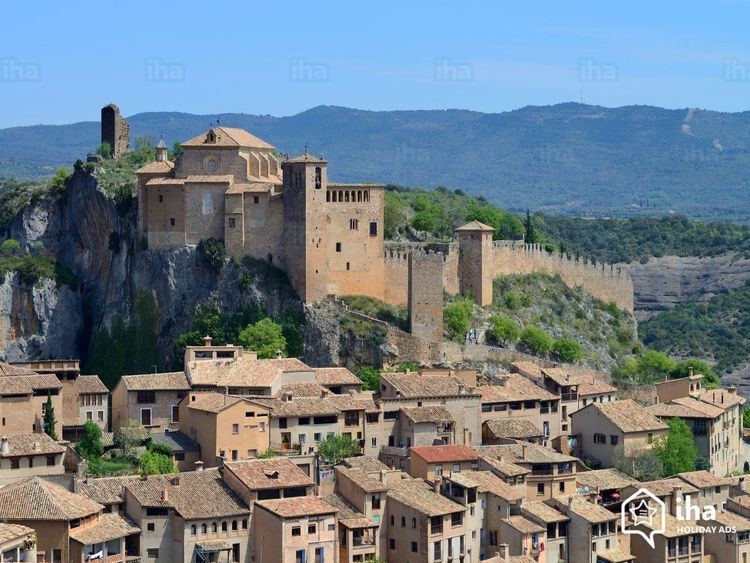Area rank Ranked 6 Parliament Cortes Generales Population 224,909 (2014) | Demonym(s) Oscense | |
 | ||
Clubs and Teams Points of interest Destinations Huesca, Ordesa y Monte Pe, Jaca, Aínsa‑Sobrarbe, Benasque | ||
Huesca (Aragonese: Uesca, Catalan: Osca), officially Huesca/Uesca, is a province of northeastern Spain, in northern Aragon. The capital is Huesca.
Contents
Map of Huesca, Spain
Positioned just south of the central Pyrenees, Huesca borders France and the French Departments of Pyrénées-Atlantiques and Hautes-Pyrénées. Within Spain, Huesca's neighboring provinces are Navarre, Zaragoza and Lleida.
Geography
Covering a primarily mountainous area of 15,626 km², the province of Huesca has a total population of 228,566 (in 2010), with almost a quarter of its people living in the capital city of Huesca. The low population density, 14.62/km², has meant that Huesca's lush valleys, rivers, and lofty mountain ranges have remained relatively pristine and unspoiled by progress.
Home to majestic scenery, the tallest mountain in the Pyrenees, the Aneto; eternal glaciers, such as at Monte Perdido; and the National Park of Ordesa and Monte Perdido, rich in flora and protected fauna. Popular with mountaineers, spelunkers, paragliders, and white water rafters it is also a popular snow skiing destination with notable resorts in Candanchú, Formigal, Astún, Panticosa and Cerler.
History
The Romans colonised the province of Huesca, which formed the northern part of Hispania Tarraconensis, and continued to live there well into the 5th century until the arrival of the visigoths. As a mountainous frontier region, it was difficult to dominate. The northern counties had at one time belonged to the Kingdom of Navarre but split off and managed to stem early Moorish invasions in the Middle Ages by forming alliances between themselves and with the Franks, to become Frankish feudal marches. The imperative of sovereignty, or independence, for the northern border counts, gave rise to the legendary Kingdom of Aragon, which was the precursor to the Empire or Crown of Aragon, and ultimately the Kingdom of Spain.
Administrative divisions
The modern day province comprises 10 comarcas and 202 municipalities.
The following comarcas having their capital in Huesca Province include municipal terms within Zaragoza Province:
Language
Spanish is the primary language in the province, however the local linguistic varieties in the center and north of the province (often called fabla) belong to the Aragonese language, which now survives mainly in the northernmost comarcas, such as the Aragon Valley in Jacetania, the Alto Gallego, Sobrarbe, and Ribagorza, where hitherto landlocked and isolated villages have helped the language to thrive into the 21st century.
In the easternmost areas of the province, varieties of the Catalan language are spoken, with a few transitional dialects difficult to classify as Aragonese or Catalan.
